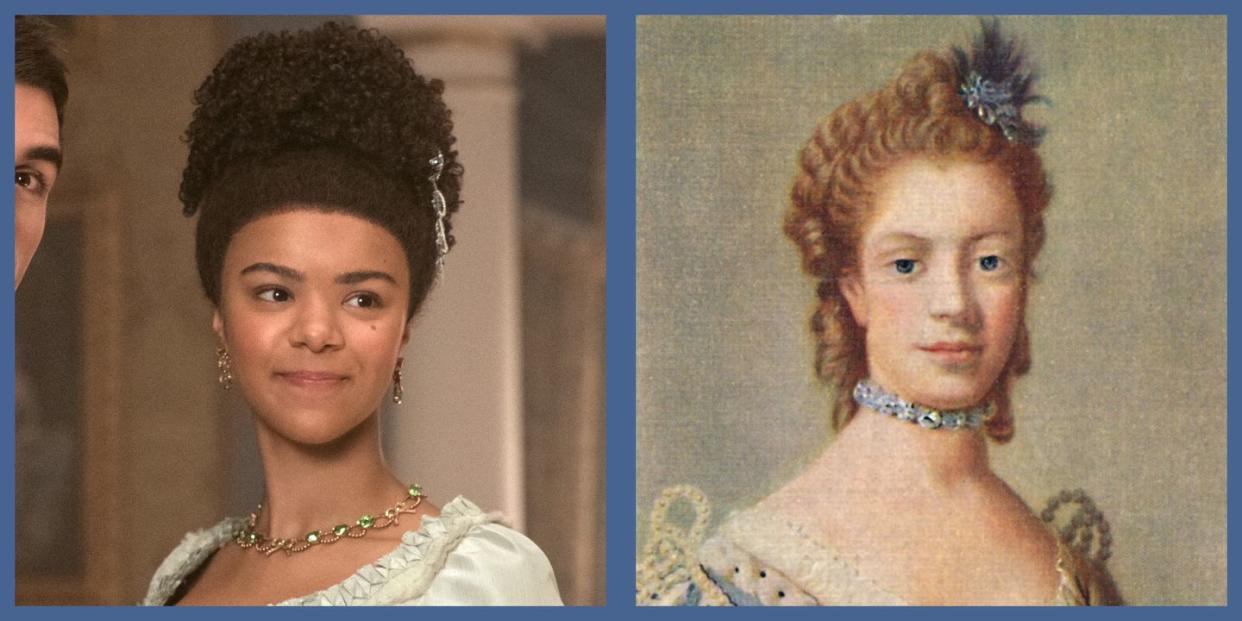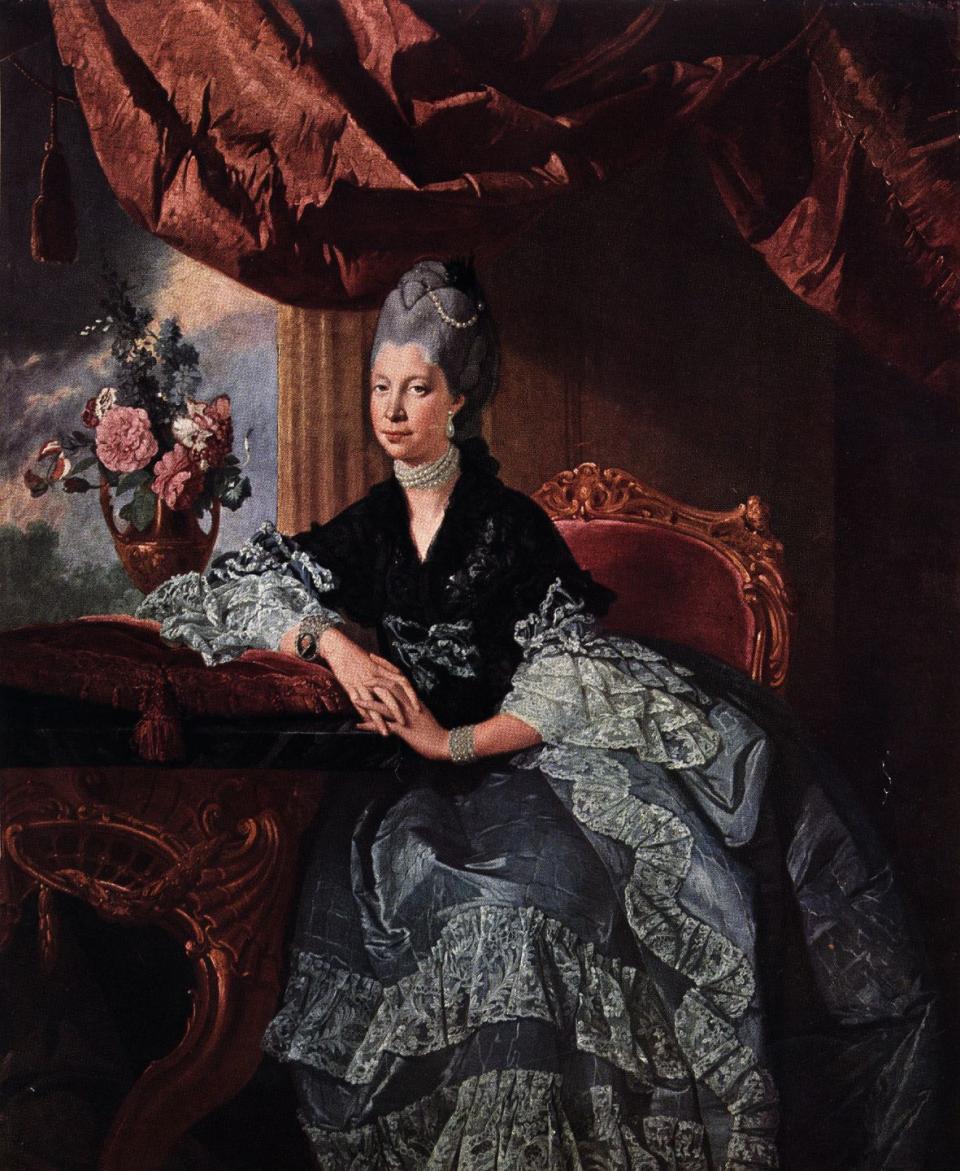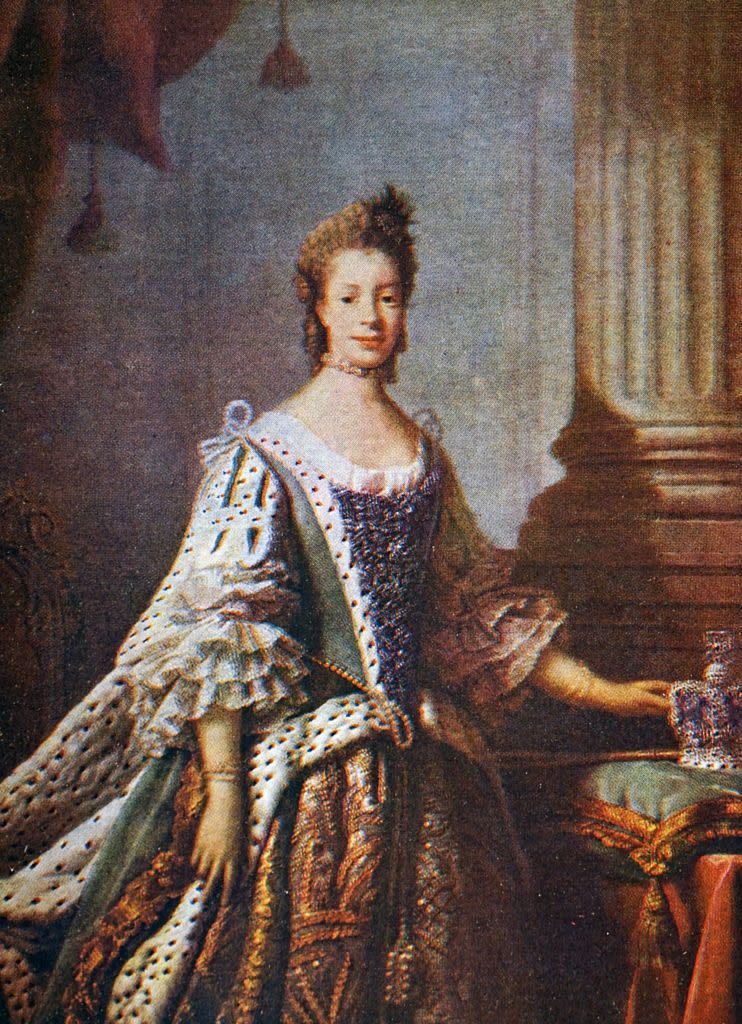Who Was the Real Life Queen Charlotte?

- Oops!Something went wrong.Please try again later.
- Oops!Something went wrong.Please try again later.
- Oops!Something went wrong.Please try again later.
"Hearst Magazines and Yahoo may earn commission or revenue on some items through these links."
Bridgerton has no shortage of scene-stealing characters, from heartthrob lords to conniving social climbers and, of course, the cutting wit of Lady Whistledown herself. Yet, even among all of these dramatic personalities, Queen Charlotte stands out. The ultimate in social power, the ever-coiffed queen can make or break the chances of a young debutante with a word. With a new series taking a look into Charlotte's history debuting this spring (Queen Charlotte: A Bridgerton Story hits Netflix on May 4) what better time to investigate the real life royal?
Here, everything you need to know about the real Queen Charlotte.
She was born a German princess.
In 1744 in Mirow, Germany, Charlotte Sophia of Mecklenburg-Strelitz was born into German nobility as the youngest daughter of Charles, Duke of Mecklenburg-Strelitz and Princess Elizabeth Albertina. Despite her title of princess, Charlotte was raised in a fairly rural duchy, and had limited knowledge of court life.
Some scholars have suggested that her lack of courtly experience may have been a factor when, in 1761, England's King George III selected her to be his bride. Having succeeded his grandfather's throne the year before, the 22-year-old king was in need of a wife and heirs, and after surveying a number of options among the Protestant princesses of Europe (as head of the Church of England, the British monarch was and remains banned from marrying a Catholic) he ultimately chose the 17-year-old Charlotte, sight-unseen.
George and Charlotte
George and Charlotte didn't actually meet until the day of their wedding, on September 8, 1761. The future queen had arrived in London mere hours before. "Introduced to the king, Charlotte ‘threw herself at his feet, he raised her up, embraced her and led her through the garden up the steps into the palace,’" writes Janice Hadlow in A Royal Experiment: The Private Life of King George III.
Though she'd been chosen as a matter of practicality, the royal couple appeared to get along well and evidently developed a genuine love connection. Over the course of their first decades of marriage, they were rarely apart, and all evidence suggests that unlike most of the royals of his time, George never took a mistress.

The couple went on to have 15 children together—9 boys and 6 girls—13 of whom would survive into adulthood. Among their number were the future King George IV, who would spend much of his father's later life acting as regent, King William IV, and Prince Edward, Duke of Kent, whose daughter, Queen Victoria, would become one of England's most storied monarchs.
While their love for each other might sound like the stuff of a real life royal romance, it was far from smooth sailing for George and Charlotte. The king reigned over England during a wildly turbulent period, notably marked by the American Revolutionary War, in which Britain's North American colonies officially separated from them, becoming the United States of America, as well as ongoing battles with France. George had, by that time, already begun suffering from bouts of what came to be known as his "madness," the precise nature of which is still unknown. (Historians have suggested a number of possible causes, including bipolar disorder and acute porphyria.)
The Regency Bill of 1765 stated that if George should become permanently unable to rule, Charlotte would become Regent, acting in the king's stead as his official representative. However, after the Regency Bill of 1789, their son, George IV became regent, while Charlotte became the guardian of the king himself, as well as the court, after the collapse of her husbands mental state in 1811, from which he never recovered. Charlotte oversaw his care and performed the duties of queen until her own death in 1818.

Charlotte's mark on history
She may not have taken an interest in politics, but Charlotte nonetheless made an indelible mark on the monarchy as it exists today. Though the royal couple's official residence was St James's Palace, where court functions were held, in 1762, George and Charlotte moved into Buckingham House, which was rechristened Buckingham Palace—the home became such a favorite of Charlotte's that it was often known simply as "The Queen's House."
She was also responsible for another piece of now-historic royal property, purchasing Frogmore House as a retreat for herself and her unmarried daughters in 1792. She commissioned artist Mary Moser, a founder member of the Royal Academy, to decorate the walls and ceiling at Frogmore giving the house links to some of the most important female artists of the time. The cottage built on the grounds at her behest in 1801 has remained in use by the royal family into modern times—Prince Harry and Meghan Markle lived there before they stepped back from their positions as working royals in 2020, and earlier this year King Charles III cause a stir when he reportedly offered the house, which was still technically in use by Harry and Meghan, to his brother Prince Andrew.
An avid lover of music, Charlotte was also a friend and patron of German composer Johann Christian Bach; per Lives of England's Reigning and Consort Queens by H. Eugene Lehman, she even helped him get the position of state musician. At age 8, Mozart impressed the queen, and was later invited to perform to at the celebration of the anniversary of George III's accession in 1764. The following year, the young prodigy dedicated his Opus 3 to Charlotte.
And as for those famous debutantes? Queen Charlotte's Ball, as the tradition became known, was one of the most important social engagements of the year for young British nobility. First held in 1780 as a charitable fundraiser, the ultra-exclusive ball became a hallmark of the London social calendar, inspiring other balls and ultimately giving rise to what became know as "the London season"—a tradition that carried on until 1958.

Was she Black?
The Bridgerton universe has, famously, opened up the racial bounds of traditional period pieces in order to allow greater diversity into its world of courtly intrigue and romance. On the original series and in the spin-off, Queen Charlotte: A Bridgerton Story, Charlotte is played by Golda Rosheuvel and India Amarteifio respectively, both actresses of color, yet there is some scholarship to suggest that the real life queen may, in fact, have had mixed race ancestry.
Notably espoused by historian Mario de Valdes y Cocom, the theory argues that Charlotte was directly descended from a purportedly Moorish branch of the Portuguese royal family (via 13th-century ruler Alfonso III and his lover Madragana) and that in some of her portraiture she bears features that could be interpreted as Black.
Other scholars have argued the point, noting that the historical definitions of racial terms like Moor do not necessarily correlate to the modern concept of Black, and that physical indicators in her portraiture are subject to interpretation.
You Might Also Like

